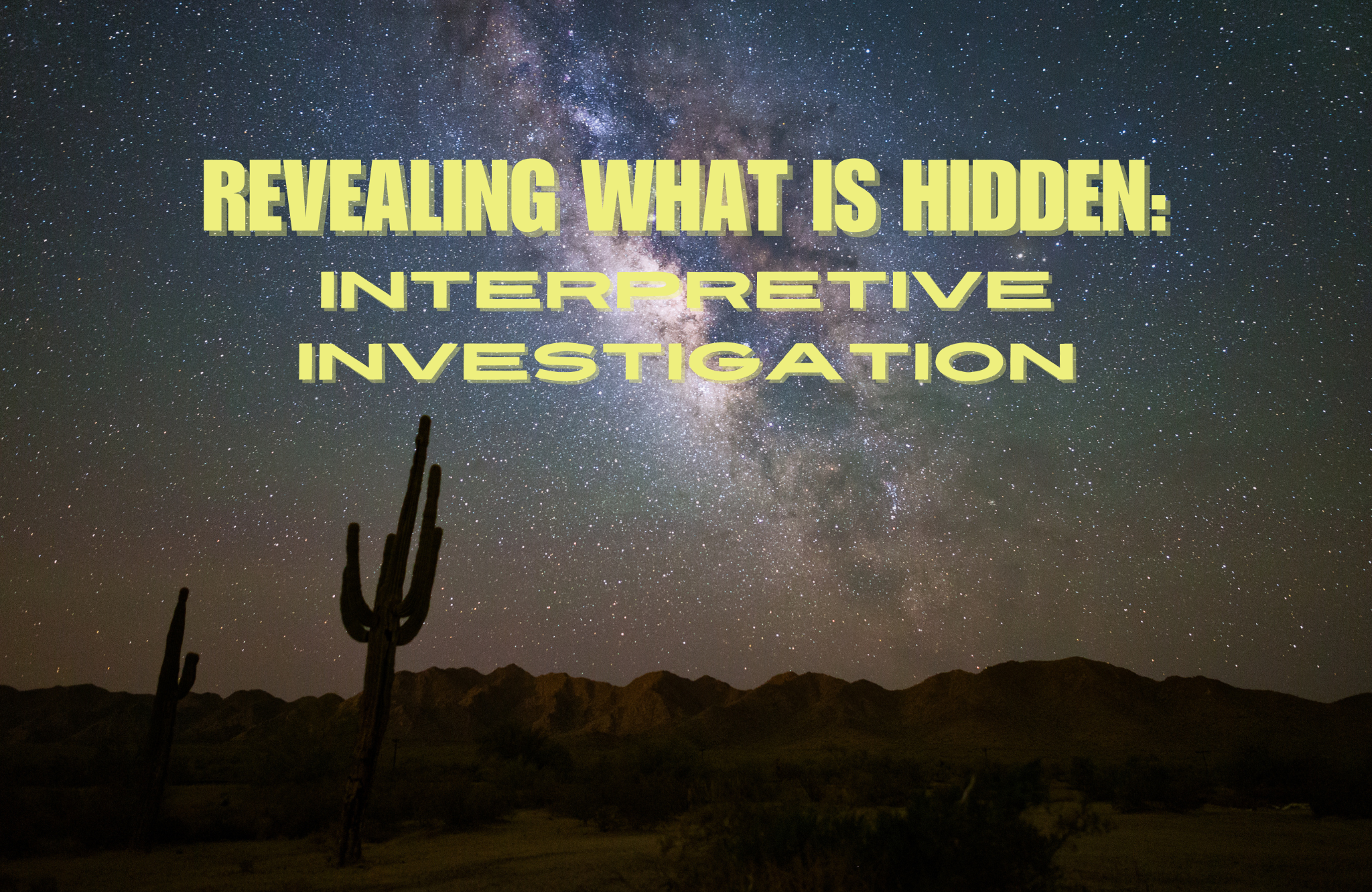Revealing What is Hidden: Interpretive Investigation

Revealing What is Hidden: Interpretive Investigation
August 1, 2024 by Taylor Studios
Before becoming an interpretive planner with TSI, I was lucky to work as an on-site interpreter in outdoor settings across the country.
Each place has its charms, but few call to me like the deserts of the American southwest. These vast and arid lands remain my favorite places to explore, learn, and reflect.
While working as an interpretive ranger in the Sonoran Desert of southern Arizona, I encountered hundreds of curious visitors and transplants who were unfamiliar with desert ecology. I wanted to learn about their first impressions.
Many of these people set out to read the desert landscape in the same ways that they had interacted with the leafy parks of their hometowns in eastern and northern states. I learned that this could leave them with misleading and even negative views of my desert home. “Empty, scary, disorienting, deadly, sparse, brutal” were all words that I heard on more than one occasion.
Indeed, the Sonoran Desert can be a land of extremes—from soaring summer temperatures to violent flash floods and spectacular lightning storms. But it is also a land of delicate wildflowers, ancient rock etchings, and enchanting creatures that creep about in the moonlight.
I wanted to share all of these positive features of the desert with the people who attended my programs. But there were challenges involved.
How easy would it be to share the Queen of the Night: a cactus that resembles a dead and shriveled tree branch for most of the year, but sporadically blooms in early summer with huge vanilla-scented flowers that open just after sundown? How could I guide visitors through the complex tunnels and chambers of a kangaroo rat’s burrow system, where the small and furry inhabitants could survive solely on a diet of dry seeds? What about the desert pipevine, with a flower that looks and smells like a mouse’s ear, so it can lure and trap the blood-sucking gnats that pollinate it? Or the quiet and lumbering Gila monster—with scales like beadwork—which only surfaces from its subterranean home for a few days each year?
I realized that many of the desert’s most magnificent spectacles tend to take place under the cover of darkness, whether deep underground or well after nightfall. And many took a very long time to observe, unraveling slowly over weeks, months, or even years. Sometimes it was a matter of sheer luck.
Much of the knowledge that I had gained about the desert came from countless individuals who lived with the land and observed it over many centuries. Without their patience, curiosity, and contributions, most of these beautiful mysteries would have been lost on me.
Thankfully, there are a few ways that interpreters can share “secret knowledge” with visitors while remaining captivating, engaging, and relevant.
One way is the power of the written word—either through engaging graphic panels or books and pamphlets that tell coherent stories. Another is through dynamic illustrations, stop-motion film, or animations that condense the passage of time into digestible pieces. Some interpreters are gifted
storytellers who can excite audiences with the simple yet powerful gift of a campfire tale. Some curate specimens and artifacts that reveal what is normally out of view, and some even have the power to freeze time or transport visitors for a brief moment.
If the prickly pear cacti weren’t fruiting, I could offer pieces of pinkish-red homemade candy so visitors could still experience the refreshing sweetness of cactus fruit. I could reach into my backpack and reveal a bag of small cookies made from coarsely-ground mesquite flour, or a jar or tangly nopales—gifts of the desert that connected visitors with the land through the timeless experience of taste.
In museums and nature centers, we are offered the special opportunity to both remove and connect visitors from their environment, sometimes simultaneously. We can use natural objects, historical relics, video and audio recordings, diagrams, photographs, topographic maps, lifelike models, and yes, sometimes even candy and cookies, to work the magic of revealing what is normally hidden.
When working with TSI to design your dream exhibit, try thinking like a magician. What secrets and illusions are present at your site? How would you want to transport your visitors through time and space? What would you reveal to create a big “WOW!” among your audience? Share your visions with us, and let’s create something truly special!